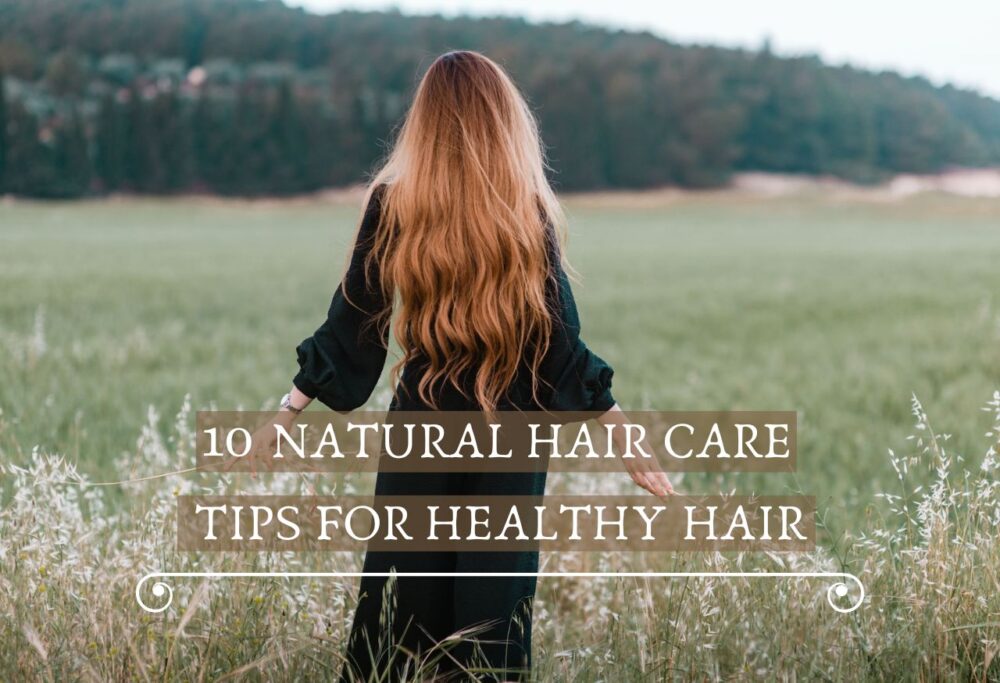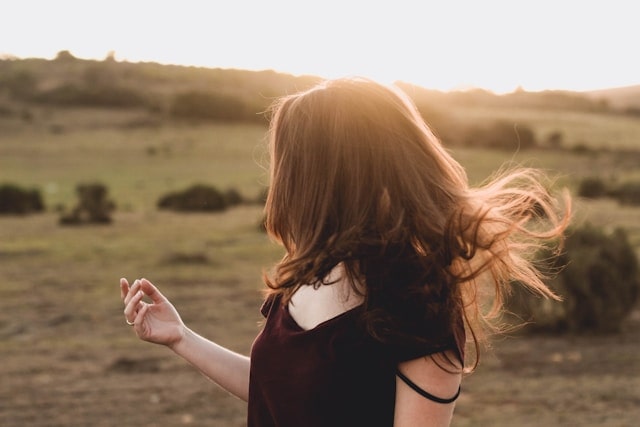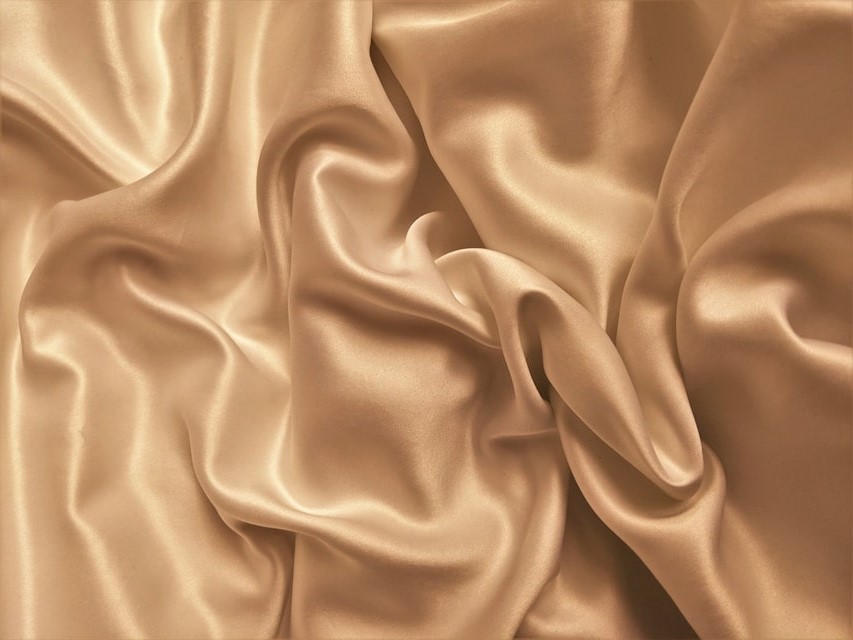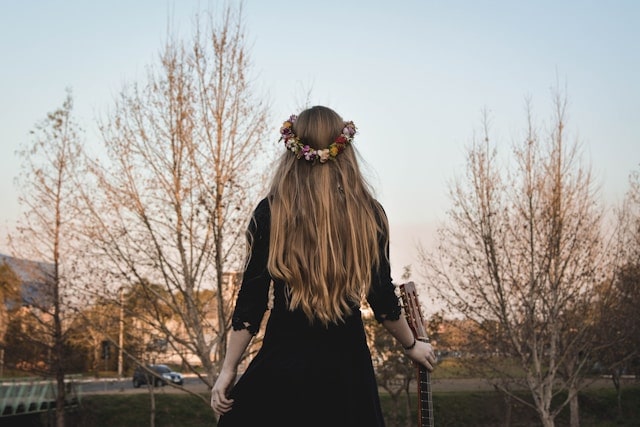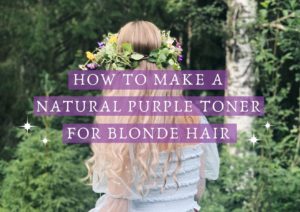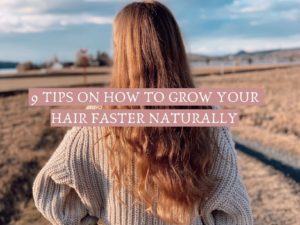This blog post is about natural hair care tips for healthy hair.
As usual, I’ve fallen into a rabbit hole on making something healthier naturally. Last year I completely nerded out on skin care. But this time it’s about hair! Because who doesn’t want strong, long and shiny hair?
I love enhancing beauty in a natural way that doesn’t burden the body. And when I go down rabbit holes, I make sure I listen to professionals. For example: when I updated my skin care routine, I listened to advice from dermatologist. They have the science backing them up, for example how effective vitamin C and A are for the skin.
But traditional dermatologists often recommend products with a lot of other unnecessary and unsustainable ingredients as well. Ingredients that someone who lives naturally don’t want on their skin. So I go on the hunt for effective natural alternatives! They still contain ingredients that dermatologists praise and are backed up by science, but without the toxic chemicals.
Now that I’ve gone down the natural hair care rabbit hole, I listened to a trichologist (specialist in scalp and hair health). I don’t really listen to hair stylist because they often focus on making hair look great, not attain healthy hair from within. But again, I try to catch the science based facts and ignore all the product recommendations that contain toxic ingredients.
Before we jump into all the natural hair care tips, it’s beneficial to know some science about how hair works. That way, you understand why some things create damage and why some ingredients can be beneficial to your hair!
The Structure of the Hair
Hair exists 95% of a protein called keratin, which in turn is build up from amino acids. A hair strand is made out of three main structures. The cuticle (the outer layer), the cortex (the middle layer) and the medula (the inner layer).
The cuticle protects the inside of your hair. It’s made up from dead cells layering over each other like scales. When the cuticles are closed and smooth, your hair will be shiny and smooth as well. Closed cuticles protects the hair from damage and moisture loss. When the cuticles are open, your hair will loose moisture and be more susceptible to damage, making it frizzy and brittle.
The cortex is the main part of the hair, and is composed of keratin filaments, structural lipids and is kept together by bonds. The medula is the most inner part of the hair, is soft and made up of cells and air spaces, and only occurs in really thick hair.
Hair growth phases
You have about 100.000 hairs on your head and loose about 100-150 hairs every day. Hair does not grow continuously like fingernails, but instead each hair on your head goes through different growth phases:
- The growth phase (anagen). The hair grows out of a hair follicle for about 3-7 years. About 90% of your scalp hairs are in this phase. The anagan phase length decreases with age and so your hair will get thinner and weaker with age.
- The transitional phase (catagen). The hair transitions from growth phase to resting phase. It stops growing and eventually detaches from the hair follicle. This takes about 2 weeks and 1% of your hair is in this phase.
- The resting phase (telogen). Your hair isn’t growing anymore and is in a resting phase. In the resting phase, a new hair starts to form in the hair follicle. About 9% of your hair is in this phase at all times.
- The shedding phase (exogen). The phase in which the hair strand falls out. After that you loose the hair, the new one grows out and the process starts all over again.
10 Natural Hair Care Tips
Living a healthy lifestyle like eating a nourishing diet, exercising regularly, sleeping enough and keeping stress levels down are all essential for your health and also for growing out strong and healthy hair.
But except for a healthy lifestyle, there also plenty of other things you can do to attain healthy hair! Here are 10 natural hair care tips for you, based on science and experience that will truly make your hair healthier in a natural way!
1. Use the right type of brush.
The first of my natural hair care tips is to use the right type of brush for your hair. The most natural and best types of brushes you can get are wooden brushes or boar bristle brushes.
However, I notice as I’m using my wooden brush, there’s a lot more breakage compared to using my boar bristle brush. Now I’ve discovered that the wooden bristles are not flexible enough for my fine hair that easily tangles, so instead of gently detangling, it rips right through the tangles. Not good!
It isn’t enough to just buy a good quality brush, you have to take your hair type into consideration as well. So, determine what kind of hair type you have and then decide what kind of brush is going to be the best! The general rule is to choose a brush with flexible and soft bristles for fine hair and sturdy and firm bristles for thick and course hair.
✧ Fine hair: Flexible and soft bristles. Soft boar bristle brush
✧ Thick hair: Sturdy and firm bristles. Like a wooden paddle brush.
✧ Straight hair: Paddle brush.
✧ Wavy hair: Large spaced bristles.
✧ Curly hair: Wide toothed comb or large spaced flexible bristles.
2. Use non toxic hair care products
Hair products are usually packed with chemicals neither good for your hair, body nor the environment. Yes they often smell divine and work really well for styling and giving your hair shine, but if you truly want to get healthier hair they’re not the best.
Even if the text on the bottle claims the product will be amazing for your hair, you should always read the ingredient list on the back. Then you see which ingredients the product actually contains. If the ingredient list seems unending, there’s a big chance that most of them will do more harm than good.
Natural non toxic products are quite the opposite. They often contain natural ingredients like oils and plant extracts that are healthy for your hair and can even aid in hair growth. Also, natural products will not poison the environment like the chemical ones do.
Here’s a list of non toxic shampoos & conditioners I recommend if you want to make the switch!
3. Apple cider vinegar rinse
This is one of my favorite natural hair care tips and I never skip it! After shampooing and conditioning my hair, I follow it up with an apple cider vinegar rinse. This leaves my hair incredibly soft, smooth, shiny and way easier to brush through. This is because the cold water with the acidic apple cider vinegar will seal off the hair cuticle. This both makes the hair shinier and prevents moisture loss!
Apple cider vinegar also improves scalp health. The natural pH balance of the hair shaft is 3.67 and the scalp 5.5. As many shampoos leave both the hair and scalp alkaline, an acidic apple cider vinegar rinse restores the scalps natural pH balance. Furthermore, apple cider vinegar is antimicrobial and can kill potential bacteria and fungi on your scalp.
To do the rinse, put a tablespoon of apple cider vinegar in a large glass and top it off with ice cold water. Do your shower routine as usual and right when you’re about to leave the shower, soak the length of your hair in the glass with the apple cider vinegar mixture. Then squeeze the water from the length of your hair back into the glass and dump everything over your head so it soaks your entire scalp. Squeeze it out of your hair and you’re finished!
The apple cider vinegar rinse is the final rinse and should NOT be rinsed with water again afterwards. And don’t worry! Once your hair dries, you won’t be able to smell the apple cider vinegar anymore.
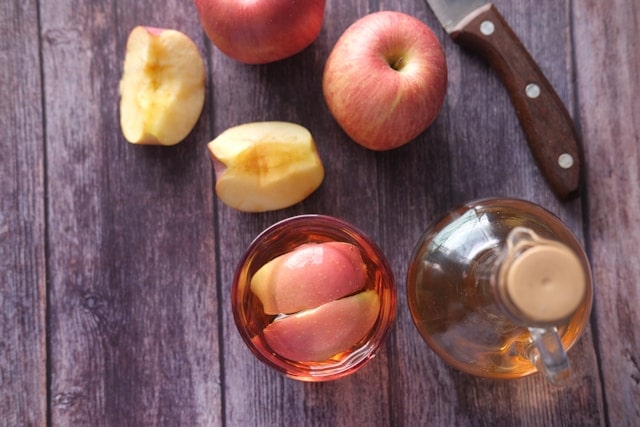
4. Be careful with brushing wet hair
You should be very careful when brushing your hair when it’s wet and ideally avoid it all together (unless you have curly hair). When hair is wet it’s much more fragile and can easily snap with tugging, leading to breakage.
This also means that you shouldn’t create unnecessary friction on your hair when it’s wet. Like for example going to bed with wet hair, putting it up in a towel or aggressively dry it with a towel. Handle your wet hair carefully like precious and fragile strands of gold!
5. Sleep on a silk pillow case or use a silk hair bonnet
Another favorite of my natural hair care tips is sleeping on a silk pillow case. Silk is a super soft material that won’t absorb any moisture and won’t cause any friction to your hair. The soft silk material allows your hair to glide over it as you move, preventing snagging, tangles and breakage from forming while you sleep. Both preventing friction and moisture loss is super important to retain healthy hair, especially for the ends! You should protect your hair as much as possible against breakage, so you won’t have to cut it as often.
Changing my cotton pillow case to a silk one was a game changer for me. Silk pillow cases are not only good for your hair, but for your skin as well! Since I sleep on a silk pillow case, I’ve noticed a lot less frizzy hair and more hydrated skin when I wake up. I love sleeping on a silk pillowcase so much that I always take it with me on my travels because cotton pillowcases now feel uncomfortable and harsh on my skin and hair (I can literally see the difference when I wake up).
6. Use hair protective hair styles
Protective hair styles are important to prevent your hair from getting damaged from tangling, breaking, friction, pulling etc. During the day you mostly want to protect your hair from weather conditions and during the night you want to protect it from unnecessary friction.
One of the most protective hair styles for your hair is to braid it, twist it or put it in a loose bun on top of your head. With loose I mean that it should not create any tension on the scalp. Also be sure to use hair friendly hair ties, to prevent them from causing friction damage.
Consider which hairstyle will fit you best depending on the day. For example, braiding it a windy day to avoid tangles, protecting it with a hat or bonnet on a particularly sunny or cold day or putting it in a side braid if you sleep on your back.
Also some hair styles are more damaging to your hair then others. For example: The same hair style every day (which creates damage at the same spot from either hair ties or tugging), tight buns or braids that tugs on the hair follicles, heat styling, coloring and wearing extensions.
7. Use hair friendly hair ties
Another natural hair care tip is to use hair friendly hair ties that don’t create friction or breakage. Silk hair ties or scrunchies are the absolute best. This because silk is a super smooth material that glides over your hair and doesn’t cause any friction. The second best option is smooth and soft fabric hair ties that also will create less friction than traditional hair ties.
Coiled plastic hair ties are okay. While they don’t leave a dent in your hair, your hair can easily snag in between the coils and cause damage when you take it out. Hair ties you definitely want to avoid are the ones with metal or plastic bits on it, hard elastics and rubber bands.
8. Avoid heat styling
If you regularly use hot tools like flat irons, curling irons or blow dryers your hair gets really damaged over time. High heat can alter the shape of the protein structure in your hair, making it weaker and more prone to breakage. Heat also evaporates water, which leads to moisture loss and more brittle hair.
Avoiding heat styling as much as possible is important if you want to get naturally healthier hair. Instead of using curling irons, experiment with making heatless curls. There are also ways to get heatless straight hair and there are a lot of tutorials on YouTube you can check out!
9. Use a hair mask regularly
Our hair has much to withstand during the day, like styling, weather conditions and detangling. Using a hair mask regularly is an easy natural hair care tip that will make your hair healthier.
Because of the structure of the hair, the main nourishing ingredients for it are water, protein and oil. Water keeps the hair strands moisturized, protein keeps the hair strong and oil protects it. A good hair mask should contain them all!
If your hair is very damaged or breaks easily it can be a sign it needs protein. A good protein hair masks helps to fill the gaps in the hair cuticle and makes it stronger and more resilient to damage. Look for a hair mask with ingredients like hydrolised protein, amino acids, peptides, ceramides and lightweight oils.
Dry hair will benefit from a moisturizing hair mask with moisturizing ingredients like hyaloronic acid, glycerin, aloe vera, honey and lightweight oils that help the hair retain the moisture.
10. Use hair oil
The last natural hair care tip is to use a hair oil. You can use a hair oil both on your scalp as a scalp treatment and on your ends to protect them and prevent moisture loss.
There are a lot of different oils that are nourishing for the hair. Some great lightweight options are Argan oil, Jojoba oil and pumpkin seed oil. Lightweight oils are thinner, less dense and easily absorbed by the hair without weighting it down.
If you want to use oil on your scalp and also want to promote hair growth, adding rosemary essential oil to your hair oil is super effective!
Last thoughts on Natural Hair Care Tips
Except for the obvious healthy lifestyle improvements you can make to get stronger and healthier hair from within, these were some natural hair care tips that you can use to upgrade your hair care routine even more!
If you also want natural tips on how to grow your hair faster, here’s a blog post with nine tips that will help you grow out your hair to your ideal length: 9 Tips to Grow your Hair faster Naturally.
Good luck with your hair care routine and may you get the hair of your dreams <3
Sources:
SUBSCRIBE TO EARTHY VIBES
Then you’ll like Earthy Vibes newsletters!
Read our Privacy Policy.

